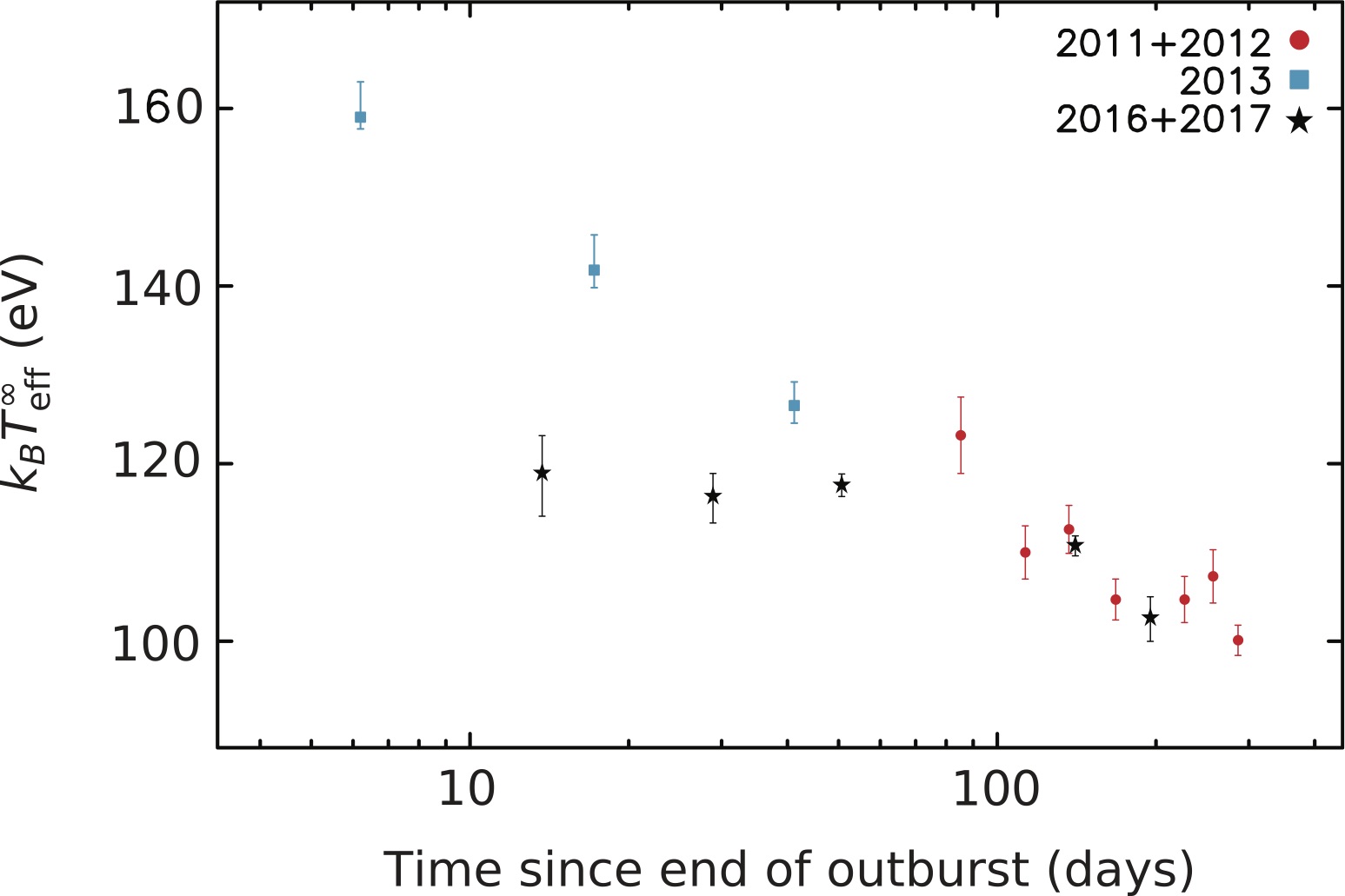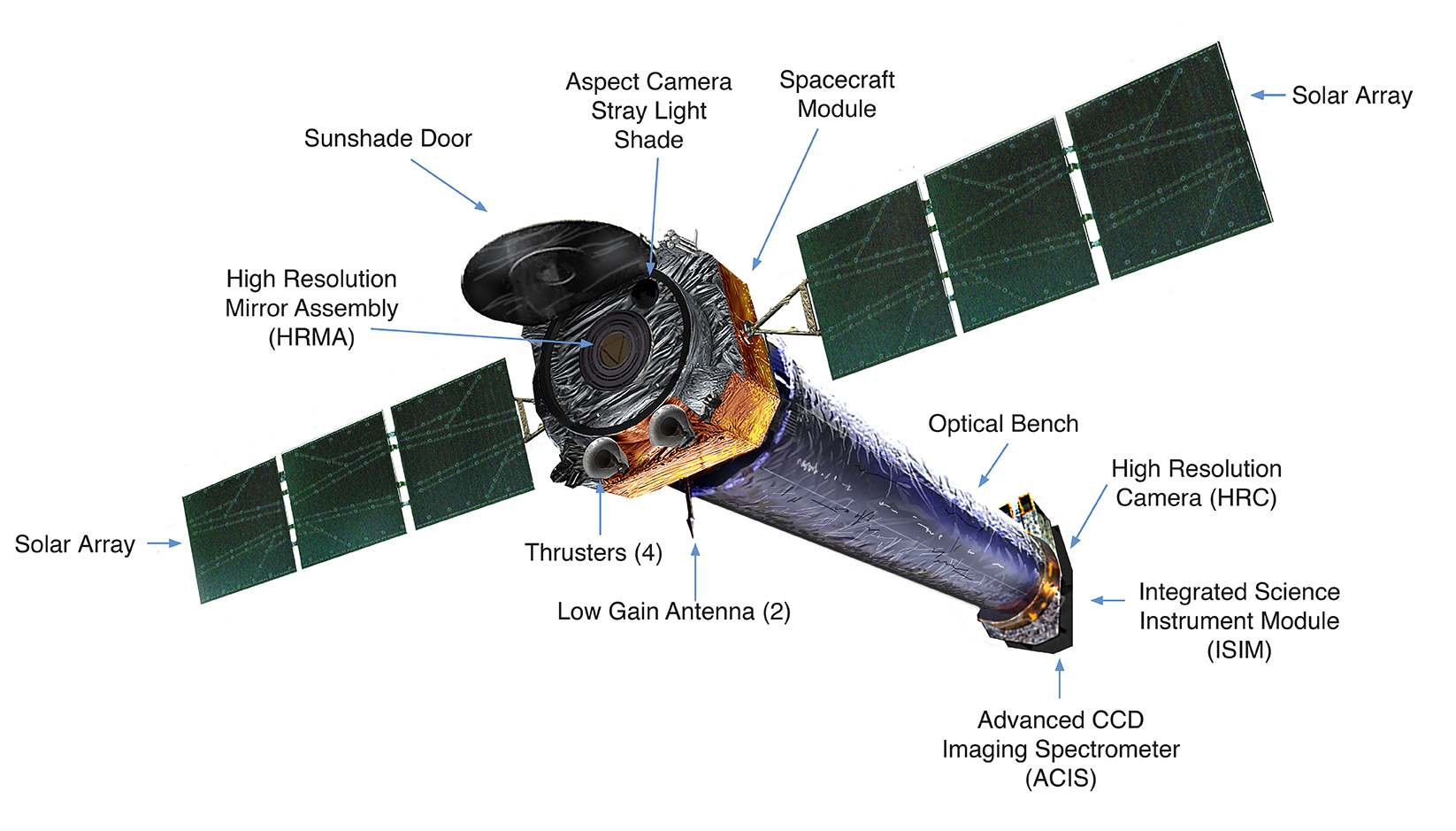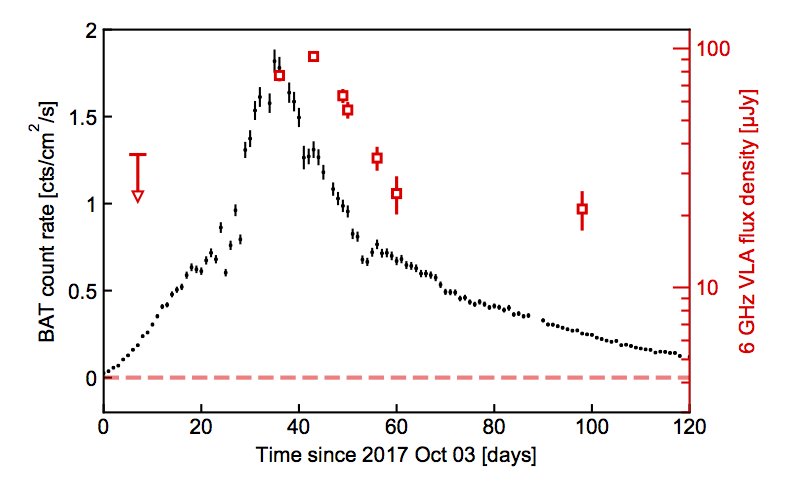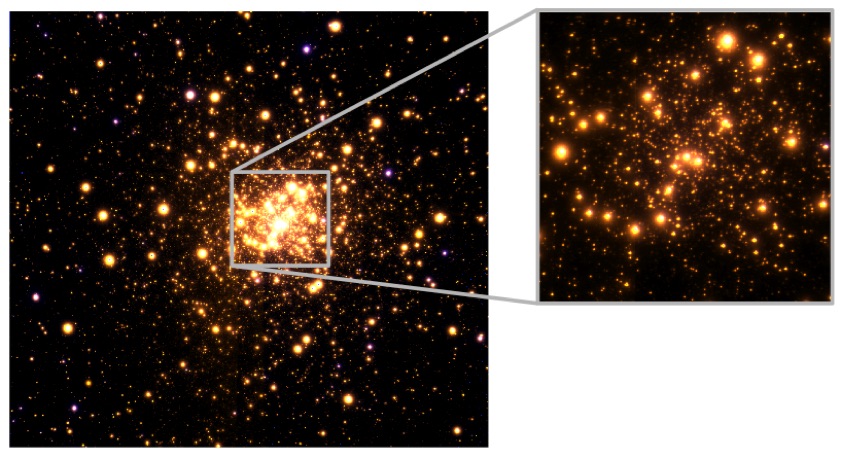The discovery of a persistent UV outflow from a neutron star.
X-ray binaries consist of a neutron star or a black hole that are accompanied by another star (e.g. one like our Sun, a red giant, or a white dwarf). Neutron stars and black holes are not friendly neighbors, however, and will relentlessly rip gap from their companion and swallow it. This cannibalistic process is called accretion. At the same time, some of the gas inswirling is propelled back into space through dense winds or highly collimated jets.
The most common signatures of outflowing material from astronomical objects are associated with “warm” gas. Despite this, only winds of “hot” or “cold” gas have been observed in X-ray binaries… until now! In this new study, we observed the recent accretion eruption of the X-ray binary known as Swift J1858 with a menagerie of ground-based and space-based observatories, including NASA’s Hubble Space Telescope (HST), the European Space Agency’s XMM-Newton satellite (XMM), the European Southern Observatory Organisation’s Very Large Telescope (VLT) located in Chile and the Spanish Gran Telescopio Canarias (GTC) located at La Palma (Canary Islands).
The results of our campaign, which was a joint effort of a team of researchers from 11 countries and was published in the journal Nature, showed persistent signatures of a warm wind at ultraviolet wavelengths occurring at the same time as signatures of a cold wind at optical wavelengths and hints of a hot wind at X-ray wavelengths. This is the first time that winds from an X-ray binary have been seen across different bands of the electromagnetic spectrum. This new discovery provides key information about the messy eating patterns of these cosmic cookie monsters. It allows us, for instance, to better understand how much gas is blown away in winds and by what mechanism winds are produced.
Designing the an ambitious observing campaign, built around the best telescopes on Earth and in space, was a huge challenge. This is mainly because it requires coordinating different observatories located at different parts of the Earth and space to look at your target all at the same time. So, it is incredibly exciting that all this work has paid off and allowed us to make a key discovery that would not have been possible otherwise.
Some press coverage: Independent
Castro-Segura et al. 2022, Nature 603, 52: A persistent ultraviolet outflow from an accreting neutron star binary transient
Paper link: ADS

Artist’s impression of a wind blown from the inner part of the accretion disk around a neutron star devouring gas from a companion. Image credit: Gabriel Pérez (IAC).










You must be logged in to post a comment.